Nutrition for sow claw horn quality and integrity
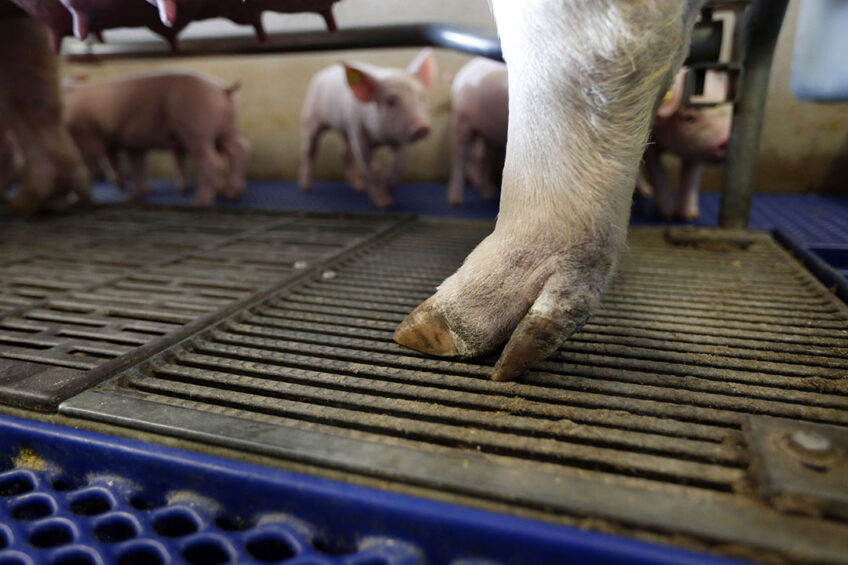
With sows increasingly being kept loose during gestation, and farrowing crates likely to disappear, claw quality and integrity are becoming much more important. How can nutrition help improve claw quality conditions?
Lameness is a multifactorial disorder affecting swine welfare and profitability. Lameness is defined as a deviation from the normal gait caused by lesions, diseases and other factors such as genetics, nutrition, housing systems and management practices. It may be episodic, and because multiple joints are affected it can shift between legs.
Lameness is regarded as an indicator of poor welfare because of its association with pain, discomfort, reduced mobility, decreased ability to cope with the environment and limitations in the ability to perform social behaviours and to explore the environment. It is estimated that up to 48% of sows on a given farm are lame and, after reproductive problems, lameness is one of the most important reasons for the premature culling of sows. The culling rate due to lameness is estimated to be between 6% and 35%. In addition, piglet mortality in lame sows (27.7%) is higher than in non-lame sows (12.4%).
The costs of lameness
Direct lameness costs include increased workload, higher diagnostic and treatment costs, reduced productive and reproductive performance, increased culling rate, increased production costs, increased labour costs, lost genetic premium and decreased slaughter value. It is estimated that lameness costs approximately $ 230 million/year to the US swine industry. Due to welfare and economic consequences of lameness, prevention is the best approach.
Nutrition management plays a substantial role in the prevention of lameness. Feed ration composition significantly affects claw horn production, health, quality and integrity. Research has shown that proteins and amino acids, fatty acids, minerals and vitamins are involved in the keratinisation process. Keratinisation represents the synthesis, aggregation and stabilisation of keratin proteins by keratinocytes, and it ensures healthy claw horn growth and claw structural integrity.
Sow claw structure
Sows have two weight-bearing claws and two dew claws. Each weight-bearing claw includes the distal phalanx, which is covered with a horn capsule. The claw horn capsule consists of a hard outside wall, a sole of hard horn, a soft heel and a narrow white line joining the wall and sole. The strength of the claw varies between the soft and hard tissue claw areas, and the junction between these areas is particularly susceptible to lesions.
Claw lesion in sows
The presence of claw lesions causes lameness in 5–20% of sows and has significant negative impact on longevity, productive performance and welfare of sows. Claw lesions include heel erosions, separations and cracks along the heel/sole junction, separations and cracks along the white line, horizontal and vertical wall cracks, skin lesions near the claw and excessive dew claw length.
The sows fed a low-fat feed ration may have lower claw horn quality and integrity and increased risk of claw lesion and lameness.
One of the primary causes of claw lesion is insufficient supply of proteins and amino acids, fatty acids, minerals and vitamins, which affects claw horn quality and integrity and thus increases claw susceptibility to chemical, physical or microbial damage from the environment. Required nutrients for claw horn quality and integrity are described in the next section.
Nutrients for claw horn quality
Proteins and amino acids
Claw horn quality and integrity may be impaired during late gestation and lactation, due to higher amino acid requirements in sows during this period. Sows may not be able to generate enough proteins to meet this increased demand, especially when dry matter intake is decreased during early lactation. Insufficient protein production interferes with claw horn production, impairs claw horn quality and integrity and increases risk of claw lesion and lameness.
Fatty acids
There is an association between dietary fatty acid content, the fat layer of the claw and claw resistance to environmental challenges. The sows fed a low-fat feed ration may have lower claw horn quality and integrity and increased risk of claw lesion and lameness.
Minerals
Minerals are important for claw horn production, and they improve claw horn quality and integrity. The demand for minerals increases during late gestation and early lactation. Insufficient dietary mineral availability or an interrupted diffuse supply results in inferior claw horn integrity and may increase the risk of sow lameness.
- Calcium influences claw horn production through the initiation and regulation of keratinisation and cornification.
- Zinc is a key mineral in the keratinisation process, and it improves sow claw horn quality and integrity.
- Copper provides structural strength and rigidity to the keratinised cell matrix, making it more resistant to mechanical and physical forces.
- Manganese has an instrumental function in the keratinisation process, and it plays an important role in maintaining claw horn quality and integrity. Additionally, adequate zinc, copper and magnesium supplementation for claw keratinisation makes the skin and the underneath sensitive tissue less susceptible to separation or breakdown and ultimately improves epithelial integrity of claws. The main role of selenium is to protect the intercellular cementing substance. Low dietary selenium concentration creates inferior claw horn with poor rigidity.
- Chromium is a cofactor in insulin activation, and it has an indirect effect on inferior claw horn production, which may result in claw lesions and lameness.
- Molybdenum is necessary for metabolism of sulphur-containing amino acids, which affect claw horn quality and integrity.
Vitamins
Vitamins have a supportive role in claw horn quality and integrity.
- Vitamin A is required for cell differentiation, and its deficiency results in poor claw horn growth and calcification.
- Vitamin C is important for collagen synthesis occurring in the claw horn.
- Biotin is necessary in the keratinisation process, and it improves claw horn strength, integrity and hardness and reduces the number of claw lesions.
- Insufficient vitamin E decreases cellular energy production and increases occurrence of claw lesions.
Nutrition as predisposing factor
Nutrition – including dietary composition, intake and availability of the nutrients ingested – is an important predisposing factor of sow lameness. Insufficient supply of proteins and amino acids, fatty acids, minerals and vitamins may be detrimental to claw horn quality and integrity. Furthermore, an optimal dietary supply of proteins and amino acids, fatty acids, minerals and vitamins with adjustment in gestation and lactation periods is essential to prevent claw lesions and lameness in sows.
 Beheer
Beheer

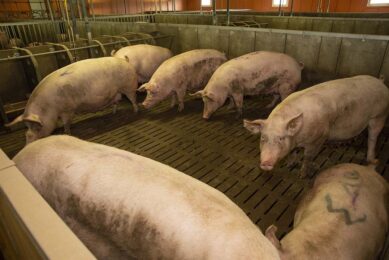
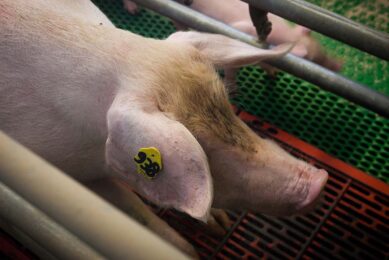
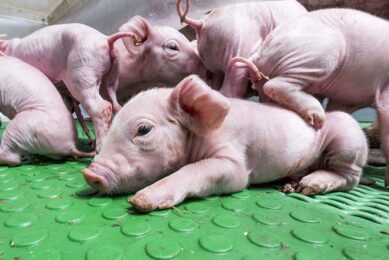
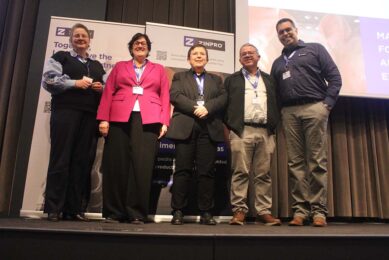




 WP Admin
WP Admin  Bewerk bericht
Bewerk bericht